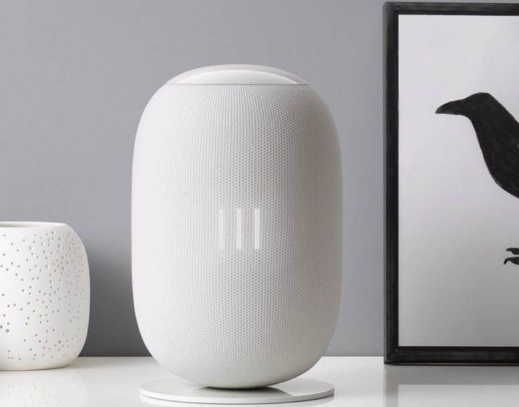Following Ali, Xiaomi, Baidu, Cheetah Mobile and other companies, Tencent released its first smart speaker-Tencent Listening on April 17. On April 20th, the speaker will be officially launched on the JD platform, and specific pricing will be announced. Compared with the Tmall Genie and Xiaomi smart speakers that take the low-cost running volume route, Tencent’s main sound quality will be positioned at around 1,000 yuan.

Smart speakers currently appearing on the market have a lot of room for price fluctuations. From Apple's HomePod's $349 (equivalent to RMB 2,200) to Tmall Genie's discount of 99 yuan, there are huge differences in the pricing strategy of each speaker. . It can be seen that the prices of almost most smart speakers are now concentrated on the prices of 399, 499, and 599. As a speaker, this price can be said to be very "Internet".
And the purpose of such pricing is also very obvious, that is, to quickly accumulate more original users, promote and enlarge their own influence in the industry, and occupy this future "traffic portal". With the continuous development of artificial intelligence, who can seize the smart speaker market can master the entire smart home appliance market through the voice interaction system and complete the layout of smart homes. It not only means that manufacturers can control smart homes, but can also use smart interactive systems. Master more consumption habits, there is a huge gold mine.
Smart home is not so much a revolution in connection as it is a revolution in interaction. So, is voice interaction expected to increase the acceptance of smart home users? Everything is not as simple as imagined, and the popularization of smart lifestyles still has a long way to go. As we all know, today's smart home products are facing the embarrassing dilemma of consumers not buying it. The reason: consumers believe that today's smart home products are too complicated to operate, and they wear "pseudo-intelligence" hats, resulting in poor user experience. In addition, the voice interaction system also faces many technical problems, such as the "intelligence" and "humanization" of voice interaction.
From the perspective of the current development of speech recognition technology, the basic theory and technical framework have been basically mature. At present, it is mainly based on the recognition architecture of deep neural networks, coupled with large-scale real data training. At present, the short-talk speech recognition error rate on the mobile phone can be less than 3%, and the phone speech recognition error rate can be less than 6%, which is basically close to or exceeds the level of manual recognition. Cognitive technologies such as semantic understanding and knowledge graphs have not yet formed a general technical framework. They are mainly optimized for specific vertical fields. This part requires breakthrough progress.
At present, the near-field recognition technology is relatively mature. The voice input function used on mobile phones now belongs to the near-field recognition technology. The user must speak within a relatively short distance from the mobile phone. However, in the smart home environment, the user and the smart terminal The distance between them has been greatly increased. A necessary condition for users to control smart homes with voice at will is that no matter where you give instructions in the living room, the device can accurately recognize them, and voice recognition technology must break through the barriers of distance. ?????????????????????????????????????????????????????????????????????????????????????????????????????????????????????????????????????????????????????????????????????????????????????????????????????????????????????????????????????????????????????????????????????????????????????????????????????????????????????????????????????????????????????????????????????????????????????????????????????????????????????????????????????????????????????????????????????????????????????????????????????????????????????????????????????????????????????????????????????????????????????????????????????????????????????????????????????????????????????????????????????????????????????????????????????????????????????????????????????????????????????
In addition, the current Internet of Things devices, ranging from cars, air conditioners, robots, to toys, wearable devices, etc., are large and small, with and without screens, and involve different application fields. The interaction methods are very different. Targeted optimization of semantic understanding and knowledge graph.
Is voice interaction the most ideal way to implement smart homes? It is open to question. The more ideal way to implement smart homes is to rely on big data to realize the intelligent cloud platform to automatically learn and perceive the needs and habits of users, and automatically control all involved. equipment. This is an assumption. Before the technology is back in place, perhaps voice control is the best way to realize smart homes at this stage.
Poly Solar Panel ,Polycrystalline Solar Panel,Mono Or Poly Solar Panels,Mono And Poly Solar Panel
zhejiang ttn electric co.,ltd , https://www.ttnpower.com
